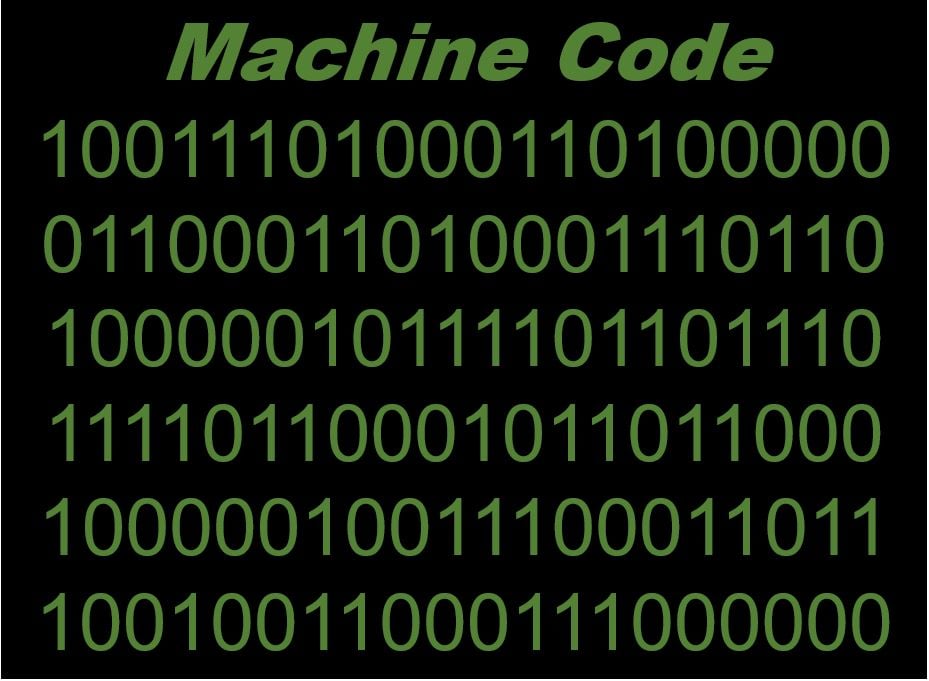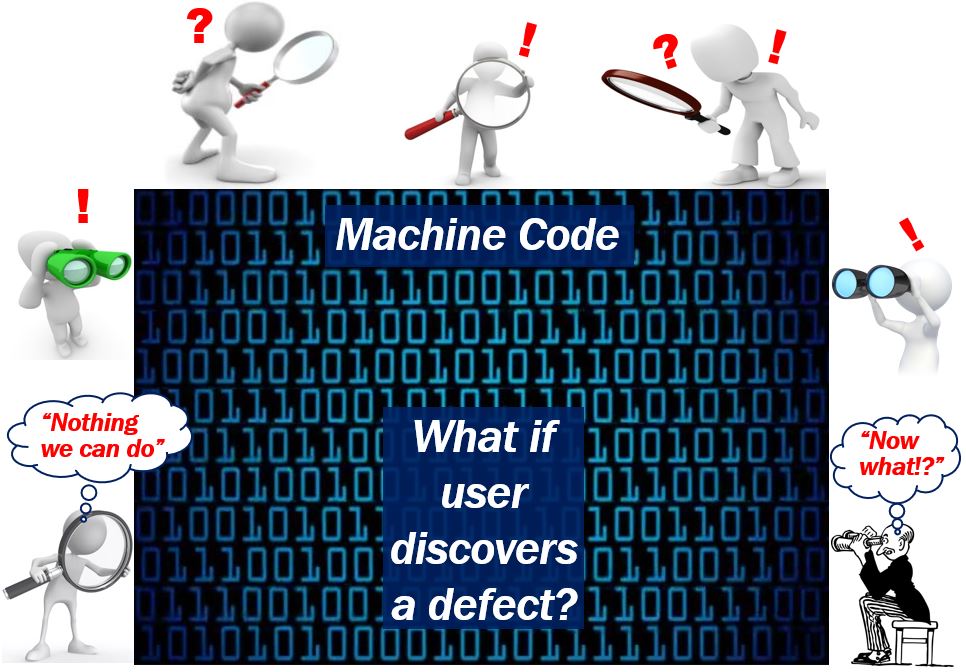What is machine code? Definition and examples
Machine Code is a computer programming language comprising hexadecimal or binary instructions that computers can respond to directly. Machine code is written in a machine language. Therefore, a machine, i.e., a computer, can execute it without any translation or conversion.
Machine code operates at the core of computing, forming the fundamental instructions that drive both simple and complex operations within the system’s hardware.
We also refer to it as ‘machine language.’ We call the instructions that exist in machine code machine instructions.
Most shrink-wrapped or commercial software today is available in machine code. If users discover a bug or any kind of defect, they cannot make corrections. They cannot do anything because the software is not in human-readable programming language code.
We refer to all the instructions and codes (programs) within a computer as software. Without software, a computer would be unusable, i.e., it wouldn’t be able to do anything.
In machine code, each instruction causes the computer’s CPU to perform a very specific task, such as a store, jump, or load. CPU stands for central processing unit.

Machine code – a numerical language
According to Wikipedia:
“Machine code is a strictly numerical language which is intended to run as fast as possible, and may be regarded as the lowest-level representation of a compiled or assembled computer program or as a primitive and hardware-dependent programming language.”
“While it is possible to write programs directly in machine code, it is tedious and error prone to manage individual bits and calculate numerical addresses and constants manually.”
“For this reason, programs are very rarely written directly in machine code in modern contexts, but may be done for low level debugging, program patching, and assembly language disassembly.”
The source code of every human-readable programming language must ultimately be translated into machine language by an interpreter or compiler. This is because computer hardware only understands long sequences or zeros and ones, i.e., binary code.

Each CPU has its own unique machine language
The CPU of each computer has its own specific machine language. The processor reads instructions and handles them. They tell the CPU what to do (simple tasks).
The instructions consist of a certain number of bits. In an eight-bit instruction, for example, the first 4-bit part tells the processor what to do, while the second 4-bit part tells it what data to use. We call the first and second 4-bit parts the opcode and the operand respectively.
According to TechTarget:
“Depending upon the processor, a computer’s instruction sets may all be the same length, or they may vary, depending upon the specific instruction.”
“The architecture of the particular processor determines how instructions are patterned. The execution of instructions is controlled by firmware or the CPU’s internal wiring.”
Machine code – copyright
In an article in the Duke Law Journal, Pamela Samuelson wrote about machine code. It is so unreadable that the US Copyright Office cannot identify whether a specific encoded program is an original work of authorship.
The US Copyright Office does, however, allow for copyright registration of computer programs.
If you are able to decompile the program’s machine code so that humans can read it, your copyright application is more likely to be successful.
The intricacy of machine code necessitates specialized tools for debugging, which can decode the binary sequences into more comprehensible forms for programmers.
Machine code – compound nouns
There are many compound nouns that contain the words “machine code,” such as “machine code analysis.” Below, you can see seven such compound words, their meanings, and example sentence that show you how we can use the terms in context:
-
Machine Code Instruction
The basic unit of data in machine code that a processor can execute to perform a specific operation.
Example: “Each machine code instruction tells the CPU to carry out a very specific task, which it executes at high speed.”
-
Machine Code Level
The level of abstraction in computing that is closest to the hardware, where the software interacts directly with the processor through encoded instructions.
Example: “Programmers must have an understanding of the machine code level to optimize software for better performance.”
-
Machine Code Sequence
A series of machine code instructions that are executed in order by the central processing unit.
Example: “The error was traced back to an incorrect machine code sequence that caused the program to crash.”
-
Machine Code Editor
A specialized software tool that allows the viewing and editing of binary machine code.
Example: “Using a machine code editor, the developer was able to alter the compiled program’s behavior.”
-
Machine Code Analysis
The process of examining machine code to understand its structure, function, and operation.
Example: “Machine code analysis is essential when reverse engineering software for security auditing.”
-
Machine Code Generation
The process by which higher-level programming code is converted into machine code that can be executed by a computer’s CPU.
Example: “The compiler’s efficiency is crucial during machine code generation to ensure the program runs quickly.”
-
Machine Code Compiler
A type of software that translates code written in a high-level programming language into machine code.
Example: “She used a machine code compiler to convert her Python script into an executable file.”
Two Videos
These two educational videos come from our sister channel on YouTube – Marketing Business Network. One explains what “Machine Code” is, and the other is all about “Code”. Both videos use easy-to-understand vocabulary and examples.
-
What is Machine Code?
-
What is Code?

